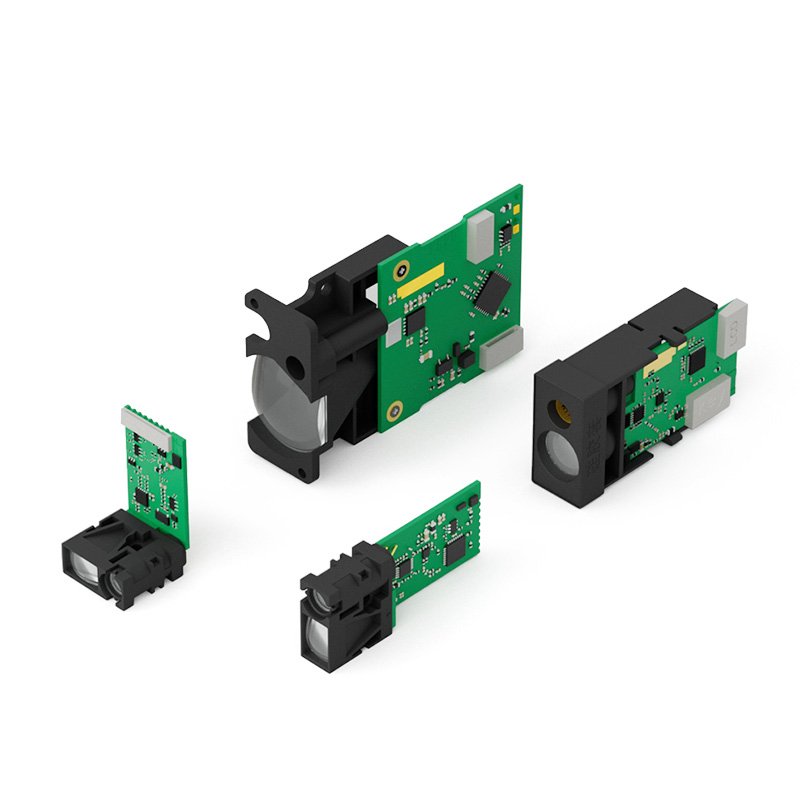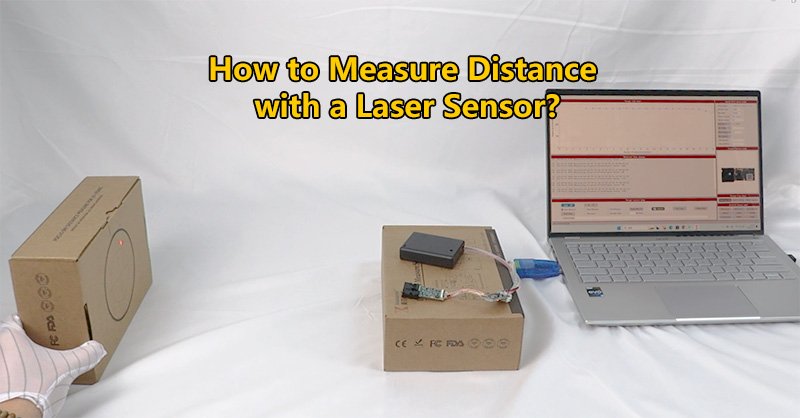위상 레이저 거리 센서와 펄스 레이저 거리 측정기 센서의 차이점
위상 및 펄스 레이저 센서의 이해: 주요 차이점 및 응용 분야
n 필드 산업 자동화, 측량, 물류및 기타 정밀 측정 분야입니다, 레이저 거리 센서 가 중요한 역할을 합니다. 일반적으로 사용되는 두 가지 유형은 다음과 같습니다. 위상 레이저 센서 그리고 펄스 레이저 센서. 둘 다 매우 정확하고 신뢰할 수 있지만, 작동 원리가 다르기 때문에 서로 다른 측정 요구 사항에 맞게 설계되었습니다.
위상 레이저 거리 센서의 측정 원리 및 장점
위상 레이저 거리 센서는 다음을 분석하여 거리를 결정합니다. 위상 시프트 변조된 레이저 빔의 위상차를 비교합니다. 이 장치는 변조된 레이저 신호를 방출하고 방출된 신호와 반사된 신호의 위상차를 비교하여 정밀한 거리 측정을 수행합니다.

위상 레이저 센서의 주요 특징
- 측정 범위: 0.03미터~200미터.
- 측정 정확도: 1~3밀리미터로 고정밀 애플리케이션에 적합합니다.
- 빠른 응답 시간: 신속하고 지속적인 측정이 필요한 시나리오에 이상적입니다.
위상 레이저 센서의 응용 분야
- 산업 자동화: 생산 라인에서 정확한 물체 위치 및 거리 감지.
- 건설 및 측량: 바닥 레벨링, 천장 높이 측정, 3D 모델링과 같은 정밀한 실내 측정 작업을 수행합니다.
- 로보틱스 내비게이션: 자율주행 시스템에서 정밀한 위치 파악 및 장애물 감지를 지원합니다.
펄스 레이저 거리측정기 센서의 측정 원리 및 장점
펄스 레이저 센서는 다음과 같은 다른 기술을 채택합니다. 비행 시간(ToF). 이 센서는 짧은 레이저 펄스를 방출하고 빔이 반사되는 데 걸리는 시간을 계산하여 장거리 측정 시나리오에서 탁월한 성능을 발휘합니다.

주요 기능:
- 측정 범위: 3미터 ~ 3000미터.
- 측정 정확도: 0.5~1미터, 실외 환경에서도 신뢰할 수 있는 데이터 보장
- 높은 적응력: 밝은 햇빛, 비 또는 안개와 같은 까다로운 환경에서도 효율적으로 작동합니다.
애플리케이션:
- 보안 및 감시: 경계 보안, 드론 모니터링, 무인 감시 시스템에 효과적입니다.
- 측량 및 탐사: 대면적 매핑, 지질 조사, 광산 탐사에 이상적입니다.
- 교량 및 수위 모니터링: 엔지니어링 프로젝트에서 구조 모니터링을 위한 실시간 비접촉식 데이터를 제공합니다.
위상 레이저 센서와 펄스 레이저 센서의 주요 차이점
| 측면 | 위상 레이저 거리 센서 | 펄스 레이저 거리 측정기 센서 |
| 측정 범위 | 0.03~200미터 | 0-3000 미터 |
| 측정 정확도 | 1-3밀리미터 | 0.5-1미터 |
| 작동 원리 | 위상 편이 계산 기준 | 레이저 비행 시간(ToF) 기준 |
| 가장 적합한 애플리케이션 | 단거리, 고정밀 측정 | 장거리 측정 |
레이저 거리 센서를 선택해야 하는 이유는?
당사는 개발 및 제조 전문 기업입니다. 레이저 거리 센서 독자적인 기술을 갖추고 있습니다. 다년간의 업계 경험을 보유한 하이테크 기업으로서 다음과 같은 서비스를 제공합니다. 위상 레이저 거리 센서 그리고 펄스 레이저 거리 측정기 센서 다양한 애플리케이션 요구 사항을 충족합니다. 다양한 제품군을 결합합니다:
- 첨단 광전자 기술 정확성과 안정성 향상을 위한
- 견고한 디자인 복잡한 환경 조건을 견딜 수 있도록
- 맞춤형 솔루션 특정 산업 요구 사항을 충족하도록 맞춤화
다음이 필요한지 여부 단거리 정밀 측정 자동화 작업 또는 장거리 데이터 수집 산업용 모니터링을 위한 레이저 센서는 탁월한 성능과 신뢰성을 제공합니다.
지금 바로 문의하세요!
측정 목표를 달성할 수 있도록 전문적인 지원과 맞춤형 솔루션을 제공하기 위해 최선을 다하고 있습니다. 다음 연락처로 문의하세요. 자세히 알아보기 혁신적인 레이저 거리 센서와 이를 통해 비즈니스 운영을 개선할 수 있는 방법에 대해 알아보세요.


